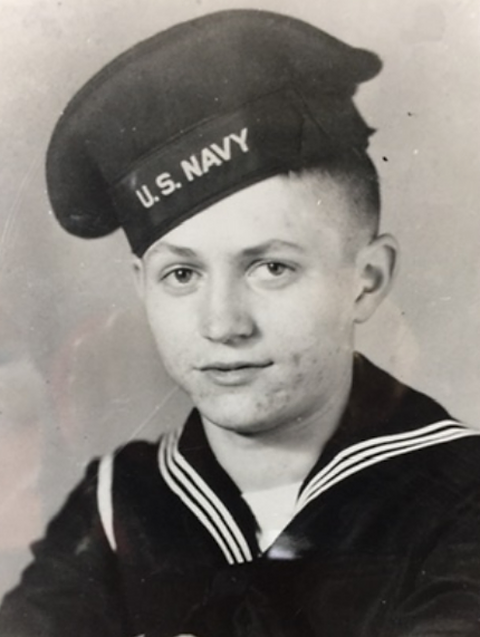
‘Then the Sharks Came’: How One Sailor Survived the Sinking of the USS Indianapolis
Shortly after midnight on July 30, 1945, two torpedoes struck the starboard side of the USS Indianapolis in the Pacific Ocean. Just as Seaman Second Class Harold Bray reached his battle station near the fantail, he heard someone shout, “She’s going down!” He refused to believe that the mighty American heavy cruiser might actually sink.
It did so 12 minutes later.
Over the next four harrowing days, Bray and his shipmates would battle the elements, dehydration and hundreds of sharks before the U.S. Navy discovered the survivors.
Only 316 men from the crew of 1,195 were alive, making this sinking the greatest loss of life at sea in American military history.
Today, the resident of Benicia, California, stands alone. The Sept. 29 death of fellow sailor Cleatus Lebow of Abernathy, Texas, makes Bray the sole survivor of that wartime catastrophe.
“At first I couldn’t believe it was going down — how could something so beautiful sink?” Bray recalled in a 2020 interview with the Vallejo Times- Herald on the 75th anniversary of the loss of the USS Indianapolis.
The cruiser had departed the island of Tinian a few hours earlier after completing a top-secret mission to deliver the atomic bomb that would be dropped at Hiroshima a week later. Japanese submarine I-58 fired a spread of torpedoes at the vessel in the middle of the Philippine Sea. An estimated 300 American sailors were trapped in the hull of the USS Indianapolis as it sunk.
The remaining men ended up in the ocean. Some had lifejackets while others clung to rafts and floating debris. With little food and water, sailors suffered dehydration during the heat of the days and hypothermia from the cold of the nights while floating in oil-choked waters.
“Then the sharks came,” Bray recalled in a 2014 interview. “I looked down and they were just swarming around us. Their tails would hit me every once in a while. There wasn’t really anywhere to go; we had to deal with them. The sharks seemed to go after the people that had big cuts to them, were naked or just in their skivvies. We lost a lot of good men in those first few days.”
As many as 150 sailors may have been killed in shark attacks. Scores of others perished from delirium brought on by the elements or ingesting saltwater and fuel oil.
At first, the Navy did not realize the cruiser had been sunk, so no rescue mission was attempted. Survivors were finally spotted by a patrol plane, which radioed the position. A lone PBY-5A Catalina plane landed at the scene, where crew lashed men to the wings to keep them alive until rescue vessels arrived.
“I can’t describe to you how it felt when the ships started showing up to rescue us,” Bray said in 2014.
Following the war, Capt. Charles B. McVay III was court-martialed for hazarding his ship, even though many of his sailors spoke in his defense. The Japanese sub commander also testified that the American skipper could have done nothing to save the USS Indianapolis.
McVay, who committed suicide in 1968, was later absolved of any wrongdoing — in part by a history project by sixth-grade student Hunter Scott.
Bray’s story and those of the other survivors was chronicled in the 2018 book “Indianapolis: The True Story of the Worst Sea Disaster in U.S. Naval History and the Fifty-Year Fight to Exonerate an Innocent Man” by Lynn Vincent and Sara Vladic.
“From Harold, I learned a lot about the perspective of the very young men who went aboard Indianapolis and survived,” Vladic said in 2020. “They believed they were just too young to die, and it wasn’t a possibility.”
She added, “Harold still wins the title for giving the best hugs.”
